THE JAMES WEBB TELESCOPE
How to ship the world's largest space telescope 5,800 miles across the ocean
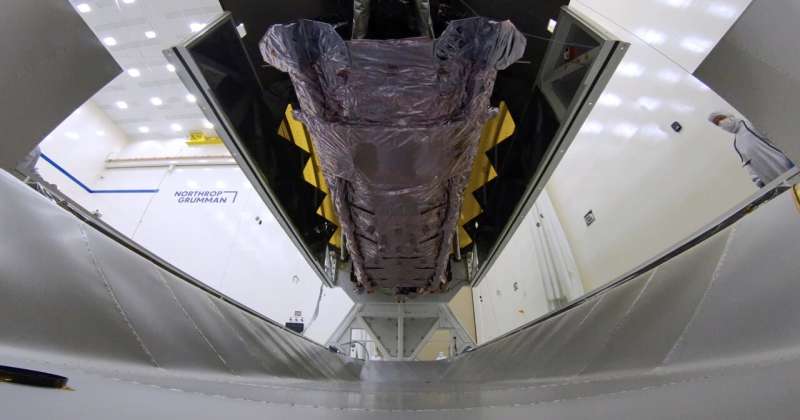
When NASA's James Webb Space Telescope launches, it will undergo one of the most harrowing deployment processes any spacecraft has ever endured. But before it even gets on top of its ride to space, Webb had to complete a final journey here on Earth: a roughly 5,800-mile (9,300-kilometer) voyage at sea.
Webb was shipped from California on Sept. 26, ultimately passing through the Panama Canal to reach the Port de Pariacabo—located on the Kourou River in French Guiana, on the northeastern coast of South America—on Oct. 12. Webb will now be driven to its launch site, Europe's Spaceport in Kourou, French Guiana, where it will begin two months of operational preparations before its scheduled Dec. 18 launch.
With the largest and most powerful space telescope ever built as cargo, nothing about this trip was normal.
A custom-made 'suitcase'
As a one-of-a-kind machine, Webb required a colossal, specially designed "suitcase" known as STTARS, short for Space Telescope Transporter for Air, Road and Sea. STTARS weighs about 168,000 pounds (76,000 kilograms). It is 18 feet (5.5 meters) high, 15 feet (4.6 meters) wide, and 110 feet (33.5 meters) long—about twice the length of a semi-trailer.
This custom container was outfitted for any extreme or unexpected conditions Webb could have encountered during travel. In designing, building, and testing STTARS, engineers carefully tested how to best protect the container from heavy rainfall and other environmental factors.
Charting the course
Planning any trip is hard work. With Webb, added to that are the logistics of transporting an extremely large and incredibly sensitive space telescope across two oceans.
For Charlie Diaz, Webb's launch site operations manager at NASA's Goddard Space Flight Center in Greenbelt, Maryland, Webb's arrival in Kourou was the culmination of years of preparation: "There are just thousands of different things that go on behind the scenes: pulling permits, avoiding obstructions, selecting alternate routes…all kinds of nuances. I'm so proud of our team—we've been working at this now for a long time."
Webb's ship voyage will ultimately be bookended by two short drives, one in California and one in French Guiana. The first took Webb from Northrop Grumman's facilities in Redondo Beach, California, to its nearby port of departure at Naval Weapons Station Seal Beach. The second drive will bring Webb from the Port de Pariacabo to its launch site of Europe's Spaceport in Kourou.
Prior to these drives, Diaz's team conducted route surveys using satellite imagery to understand the variables at stake. They noted details down to potholes that needed to be filled or traffic lights that had to be lifted due to STTARS' height. In case of emergencies, the team also selected "safe havens," or places along the way where they could safely perform any necessary maintenance on the container.
Due to its sheer size and weight, STTARS traveled at a speed of only 5–10 miles per hour (8–16 kilometers per hour) on the road to maintain a smooth ride.
While STTARS has previously transported Webb components to other NASA or partner facilities primarily by air, the team chose to transport Webb by sea to Kourou due to the logistics of landing at the Cayenne Airport in French Guiana. The 40-mile (65-kilometer) route between the airport and the launch site features seven bridges that STTARS would have been too heavy to cross. In addition, the drive from the Port de Pariacabo to Webb's launch site is relatively short. In comparison, a drive from the Cayenne Airport to the launch site, factoring in STTARS' slow speeds and other constraints, would have taken about two days.
Compared to the turbulence of air travel and the forces experienced during landing, traveling by sea aboard the cargo transport ship MN Colibri was quite literally smooth sailing. MN Colibri was designed specifically to transport enormous rocket parts as well as sensitive payloads to Europe's Spaceport, also known as the Guiana Space Center. On average, the ship cruised at around 15 knots, or 17 miles per hour (27 kilometers per hour). Sandra Irish, lead structural engineer for Webb at Goddard, was in charge of making sure that no stresseswould "rock the boat" past an accepted level. Working with the shipping company and crew, she and her team ensured a ship route for STTARS that avoided rough waters.
Running a clean ship
As with other spacecraft, Webb must be kept clean while it is on Earth.
STTARS is essentially a mobile clean room. When Webb is on the move, STTARS maintains a low level of contaminants inside the container—no more than 100 airborne particles greater than or equal to 0.5 microns in size. For reference, half a micron is just one hundredth of the width of a human hair!
Webb's contamination control team employed several tried-and-true methods to clean both the outside and inside of the container and prepare it for receiving and carrying Webb. Members carefully inspected each screw, nut, and bolt for residual contaminants using ultraviolet light. Next, Webb was installed into STTARS while both were inside the Northrop Grumman clean room. This will seal in cleanliness until STTARS can be opened inside the receiving clean room at the launch site.
STTARS sailed to French Guiana inside MN Colibri's cavernous cargo hold, protected from weather and the sea, along with other equipment and supplies for launch preparations. A sophisticated heating, ventilation, and air-conditioning (HVAC) system built for STTARS monitored and controlled the humidity and temperature inside the container. Several accompanying trailers, loaded with dozens of pressurized bottles, provided a continuous supply of pristine, manufactured, dry air into the transporter's interior.
Neil Patel, Webb's transportation manager at Goddard, was one of five Webb team members who accompanied STTARS on its journey to ensure that Webb would remain in good condition: "Traveling through the Panama Canal with Webb was a once-in-a-lifetime experience, and a first-time activity for our team. It was very special to be bringing this observatory to the very last place it will be here on Earth," he said.
Having been transported by land, air, and now sea, the Webb telescope can already be considered a seasoned traveler. Soon, it will enter the final frontier it hasn't explored—the great expanse of space.
$10 Billion Webb Space Telescope Arrives at Europe’s Spaceport
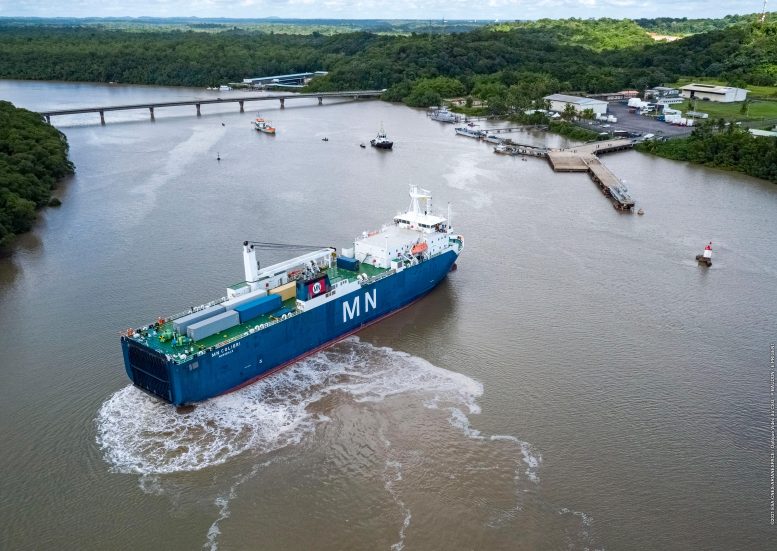
The James Webb Space Telescope, a once-in-a-generation space mission, arrived safely at Pariacabo harbor in French Guiana on October 12, 2021, ahead of its launch on an Ariane 5 rocket from Europe’s Spaceport. Credit: ESA/CNES/Arianespace
The James Webb Space Telescope has arrived safely at Pariacabo harbor in French Guiana. ESA in close collaboration with NASA will now prepare this once-in-a-generation mission for its launch on Ariane 5 from Europe’s Spaceport this December.
Few space science missions have been as eagerly anticipated as the James Webb Space Telescope (Webb). As the next great space science observatory following Hubble, Webb is designed to resolve unanswered questions about the Universe and see farther into our origins: from the formation of stars and planets to the birth of the first galaxies in the early Universe.
Every launch requires meticulous planning and preparation. For Webb, this process began about 15 years ago. Its arrival at Pariacabo harbor is a major milestone in the Ariane 5 launch campaign.
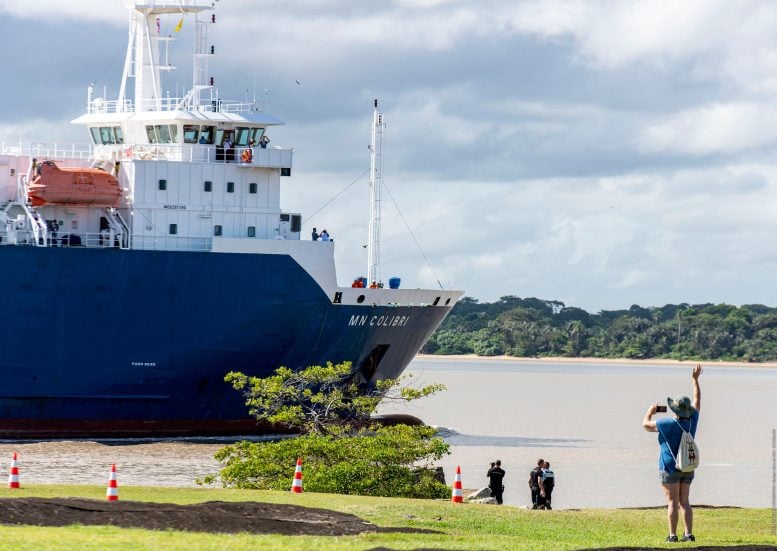
The James Webb Space Telescope has arrived safely at Pariacabo harbor in French Guiana. Credit: ESA/CNES/Arianespace
Webb arrived from California on board the MN Colibri which sailed the Panama Canal to French Guiana. The shallow Kourou river was specially dredged to ensure a clear passage and the vessel followed high tide to safely reach port.
Though the telescope weighs only six tonnes, it is more than 10.5 m high and almost 4.5 m wide when folded. It was shipped in its folded position in a 30 m long container which, with auxiliary equipment, weighs more than 70 tonnes. This is such an exceptional mission that a heavy articulated vehicle was brought on board MN Colibri to carefully transport Webb to the Spaceport.
The Spaceport’s preparation facilities are ready for Webb’s arrival. As extra protection from contamination, the clean rooms are fitted with additional walls of air filters and a dedicated curtain will shroud Webb after it is mounted on the rocket.
This launch campaign involves more than 100 specialists. Teams will work separately to prepare the telescope and the launch vehicle until they become one combined team to join the telescope with its rocket for a momentous liftoff.
When Webb arrives at the Spaceport, it will be unpacked inside a dedicated spacecraft preparation facility where it will be examined to ensure that it is undamaged from its voyage and in good working order.
In parallel to Webb preparations, Ariane 5 rocket parts from Europe will come together in the launch vehicle integration building.
Europe’s powerful and highly reliable heavy-lift workhorse has an excellent track record spanning more than 100 launches and three decades. Ariane 5’s ample fairing, 5.4 m diameter and 17 m high, provides enough space for Webb’s folded spacecraft components, sunshield, and mirrors.
Ariane 5 is well suited for science satellites with proven capability to send missions to the second Lagrange Point (L2). Ariane 5 will release Webb directly on a path towards L2 on which it will continue for four weeks, eventually arriving at L2 which is four times farther away than the Moon is from Earth.
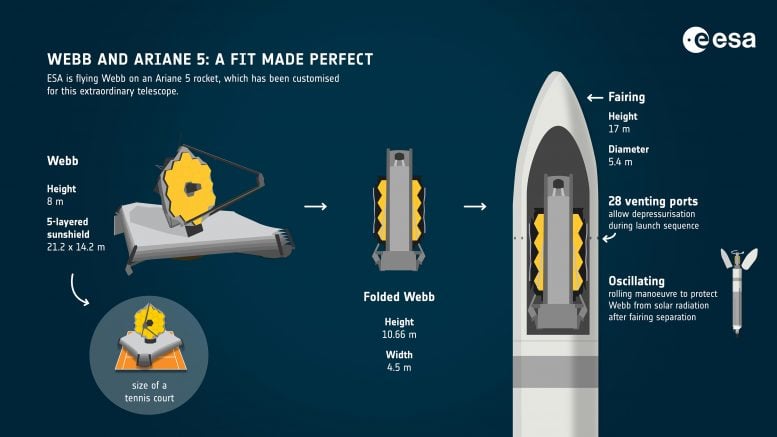
Webb and Ariane 5: a fit made perfect. Ariane 5 has been customized to accommodate all the specific requirements of the Webb mission. Credit: ESA
A few customized features make Ariane 5 a perfect fit for Webb. These include the adaptation of venting ports at the base of the fairing which will be forced fully open during the flight. The fairing – the rocket’s nose cone – will protect Webb from the acoustics at liftoff and during its journey through Earth’s atmosphere. Its venting ports will enable extremely smooth depressurization of the fairing from ground pressure to vacuum during the flight.
Then, to avoid overheating of any elements of Webb, Ariane 5 will perform a specially developed rolling maneuver to ensure that all parts of the satellite will be equally exposed to the sun.
An extra battery will provide power for a boost to the upper stage after release of the telescope, safely distancing it from Webb.
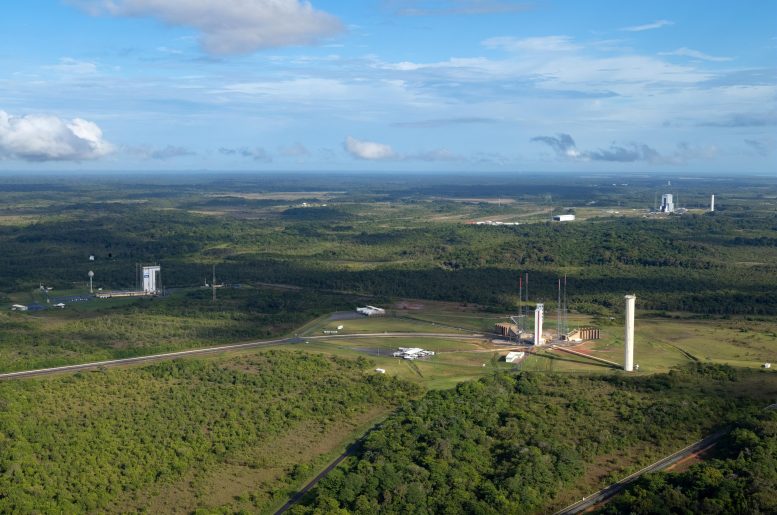
Aerial view over Europe’s Spaceport in Kourou in French Guiana on July 28, 2021. Pictured from left to right, the Vega, Ariane 5 (foreground), and Ariane 6 (background right) launch zones at Europe’s Spaceport in Kourou, French Guiana. Credit: ESA–S. Corvaja
Arianespace operates a family of rockets at Europe’s Spaceport: Ariane 5, Vega, and Soyuz. This launch site is surrounded by jungle and covers 690 km2. It is an ideal location for launching rockets for several reasons.
First, at only 5 degrees north of the equator, the rockets launched here can benefit from the ‘slingshot effect’ due to the speed of Earth’s rotation, increasing their performance as they already travel at over 300 m/s when they lift off. Also, an open ocean towards the east and north offers a large range of possible launch trajectories away from populated areas.
Finally, this region has a very low risk of cyclones or earthquakes which is important when such delicate operations are taking place.
“Webb is an excellent example of international teamwork and cooperation. We welcome Webb and our partners to Europe’s Spaceport in French Guiana to continue this adventure towards a thrilling liftoff on board Ariane 5 and to sharing the many Webb science breakthroughs to come!” commented Daniel Neuenschwander, ESA Director of Space Transportation.
Working with partners, ESA was responsible for the development and qualification of Ariane 5 adaptations for the Webb mission and for the procurement of the launch service.
Webb is an international partnership between NASA, the European Space Agency (ESA) and the Canadian Space Agency (CSA).
James Webb Space Telescope completes its voyage to French Guiana
Richard Speed
The multinational James Webb Space Telescope – named after a former NASA administrator – has arrived in French Guiana, home to Europe's Spaceport, with launch finally in sight.
An international collaboration (including contributions from NASA, ESA and the Canadian Space Agency), the long-in-gestation and eye-wateringly overbudget observatory is due for launch atop an Ariane 5 rocket on 18 December, just squeaking into 2021, if all goes well.
Aside from the 16-day, 5,800-mile trip at sea from California, it has been quite the journey for the space telescope, on which work began in 1996 ahead of a 2007 launch date. Back then the budget was around $500m. These days it's nearer $10bn after repeated delays and a redesign. To be fair, however, nothing quite like the James Webb Space Telescope (JWST) has ever been built before. Then again, that is still quite the overrun and delay.
Unlike the Hubble Space Telescope (HST), which lurks in a Space Shuttle-friendly Earth orbit, the JWST will be placed near the Earth-Sun L2 Lagrange point. A large sunshield will keep the payload cool to permit observations in the infrared using the iconic 6.5m mirror, which is itself made up of 18 hexagonal mirrors and considerably larger than the comparatively weedy 2.4m mirror of the ageing HST.
The focus on the infrared means that while the JWST won't work in the same wavelengths as the HST, its lower frequency range means it should be able to observe objects far older and more distant than the HST can. However, its location means that dealing with any spacecraft anomalies will present considerably more of a challenge than the Hubble servicing missions of old. Which, in turn, has caused some of the delays as engineers have tested and tested again the observatory while it is on the ground.
Construction was completed in 2016 (although integration of all the components took a few years longer). The intervening years before its shipment to French Guiana have seen multiple tests, including one that resulted in the sunshield tearing. Other issues included problems with the propulsion system and, in one report [PDF], "loose hardware was found in the lower area of the spacecraft."
While it might have seemed at times that the launch date would never stop slipping, the JWST is now closer to the launchpad than it has ever been. And, once in space, all will be forgiven once the data starts flowing from the science payload.
"We are going to see things in the universe beyond what we can even imagine today," said Thomas Zurbuchen, associate administrator for NASA's Science Mission Directorate in Washington, after paying tribute to the efforts of the multinational team responsible for the telescope.
James Webb Space Telescope penciled in for launch this century. Yes, Dec 18, 2021
This way up: James Webb Space Telescope gets ready for shipment after final tests
Not only is Hubble back online after outage, it's already taking photos of the cosmos
NASA fixes Hubble Space Telescope using backup power supply unit, payload computer
Before it can trouble the top of an Ariane 5, engineers must extract the JWST from its shipping container (following a drive to the launch site) before performing some final checks and loading the spacecraft with fuel. It will then be enclosed in the Ariane fairing for launch.
The first few days of the JWST's journey to its final orbit will see the solar array, antennas and sunshield deployed, with the full mirror being unfolded at around the two-week mark.
The spacecraft is expected to arrive at the second Lagrange point 30 days after launch with the entire commissioning phase expected to take six months, followed by a five-year science mission. The goal is a lifetime greater than 10 years, although the limiting factor will be the fuel needed to keep the spacecraft in place around L2.
Not quite the prodigiously long life of the HST but, again, there isn't much on the JWST that can really be serviced by astronauts should things go wrong. Even getting a crewed spacecraft to the JWST's final location would be a challenge in itself. ®

Hubble took pictures of the oldest galaxies it could – seen here – but the James Webb Space Telescope can go back much farther in time. NASA
Some have called NASA’s James Webb Space Telescope the “telescope that ate astronomy.” It is the most powerful space telescope ever built and a complex piece of mechanical origami that has pushed the limits of human engineering. On Dec. 18, 2021, after years of delays and billions of dollars in cost overruns, the telescope is scheduled to launch into orbit and usher in the next era of astronomy.
I’m an astronomer with a specialty in observational cosmology – I’ve been studying distant galaxies for 30 years. Some of the biggest unanswered questions about the universe relate to its early years just after the Big Bang. When did the first stars and galaxies form? Which came first, and why? I am incredibly excited that astronomers may soon uncover the story of how galaxies started because James Webb was built specifically to answer these very questions.
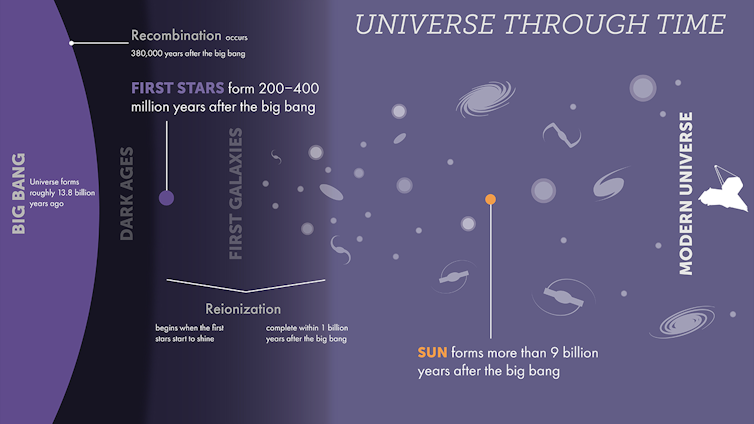
The Universe went through a period of time known as the Dark Ages before stars or galaxies emitted any light. Space Telescope Institute
The ‘Dark Ages’ of the universe
Excellent evidence shows that the universe started with an event called the Big Bang 13.8 billion years ago, which left it in an ultra-hot, ultra-dense state. The universe immediately began expanding after the Big Bang, cooling as it did so. One second after the Big Bang, the universe was a hundred trillion miles across with an average temperature of an incredible 18 billion F (10 billion C). Around 400,000 years after the Big Bang, the universe was 10 million light years across and the temperature had cooled to 5,500 F (3,000 C). If anyone had been there to see it at this point, the universe would have been glowing dull red like a giant heat lamp.
Throughout this time, space was filled with a smooth soup of high energy particles, radiation, hydrogen and helium. There was no structure. As the expanding universe became bigger and colder, the soup thinned out and everything faded to black. This was the start of what astronomers call the Dark Ages of the universe.
Read news coverage based on evidence, not alarm.Get newsletter
The soup of the Dark Ages was not perfectly uniform and due to gravity, tiny areas of gas began to clump together and become more dense. The smooth universe became lumpy and these small clumps of denser gas were seeds for the eventual formation of stars, galaxies and everything else in the universe.
Although there was nothing to see, the Dark Ages were an important phase in the evolution of the universe.
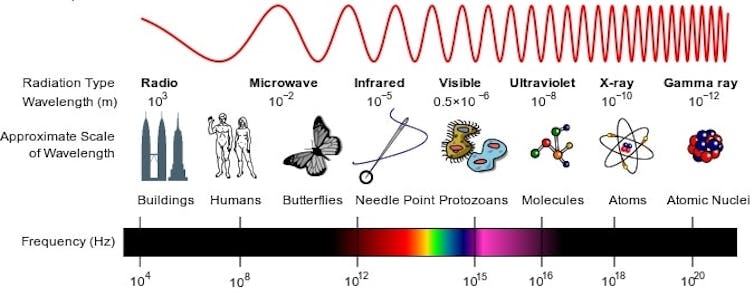
Light from the early universe is in the infrared wavelength – meaning longer than red light – when it reaches Earth. Inductiveload/NASA via Wikimedia Commons, CC BY-SA
The Dark Ages ended when gravity formed the first stars and galaxies that eventually began to emit the first light. Although astronomers don’t know when first light happened, the best guess is that it was several hundred million years after the Big Bang. Astronomers also don’t know whether stars or galaxies formed first.
Current theories based on how gravity forms structure in a universe dominated by dark matter suggest that small objects – like stars and star clusters – likely formed first and then later grew into dwarf galaxies and then larger galaxies like the Milky Way. These first stars in the universe were extreme objects compared to stars of today. They were a million times brighter but they lived very short lives. They burned hot and bright and when they died, they left behind black holes up to a hundred times the Sun’s mass, which might have acted as the seeds for galaxy formation.
Astronomers would love to study this fascinating and important era of the universe, but detecting first light is incredibly challenging. Compared to massive, bright galaxies of today, the first objects were very small and due to the constant expansion of the universe, they’re now tens of billions of light years away from Earth. Also, the earliest stars were surrounded by gas left over from their formation and this gas acted like fog that absorbed most of the light. It took several hundred million years for radiation to blast away the fog. This early light is very faint by the time it gets to Earth.
But this is not the only challenge.
As the universe expands, it continuously stretches the wavelength of light traveling through it. This is called redshift because it shifts light of shorter wavelengths – like blue or white light – to longer wavelengths like red or infrared light. Though not a perfect analogy, it is similar to how when a car drives past you, the pitch of any sounds it is making drops noticeably.
Similar to how a pitch of a sound drops if the source is moving away from you, the wavelength of light stretches due to the expansion of the universe.
By the time light emitted by an early star or galaxy 13 billion years ago reaches any telescope on Earth, it has been stretched by a factor of 10 by the expansion of the universe. It arrives as infrared light, meaning it has a wavelength longer than that of red light. To see first light, you have to be looking for infrared light.
Telescope as a time machine
Enter the James Webb Space Telescope.
Telescopes are like time machines. If an object is 10,000 light-years away, that means the light takes 10,000 years to reach Earth. So the further out in space astronomers look, the further back in time we are looking.

The James Webb Space Telescope was specifically designed to detect the oldest galaxies in the universe. NASA/JPL-Caltech, CC BY-SA
Engineers optimized James Webb for specifically detecting the faint infrared light of the earliest stars or galaxies. Compared to the Hubble Space Telescope, James Webb has a 15 times wider field of view on its camera, collects six times more light and its sensors are tuned to be most sensitive to infrared light.
The strategy will be to stare deeply at one patch of sky for a long time, collecting as much light and information from the most distant and oldest galaxies as possible. With this data, it may be possible to answer when and how the Dark Ages ended, but there are many other important discoveries to be made. For example, unraveling this story may also help explain the nature of dark matter, the mysterious form of matter that makes up about 80% of the mass of the universe.
James Webb is the most technically difficult mission NASA has ever attempted. But I think the scientific questions it may help answer will be worth every ounce of effort. I and other astronomers are waiting excitedly for the data to start coming back sometime in 2022.
University Distinguished Professor of Astronomy, University of Arizona
Disclosure statement
Chris Impey receives funding from the National Science Foundation and the Hearst Foundation.
Partners

University of Arizona provides funding as a member of The Conversation US.
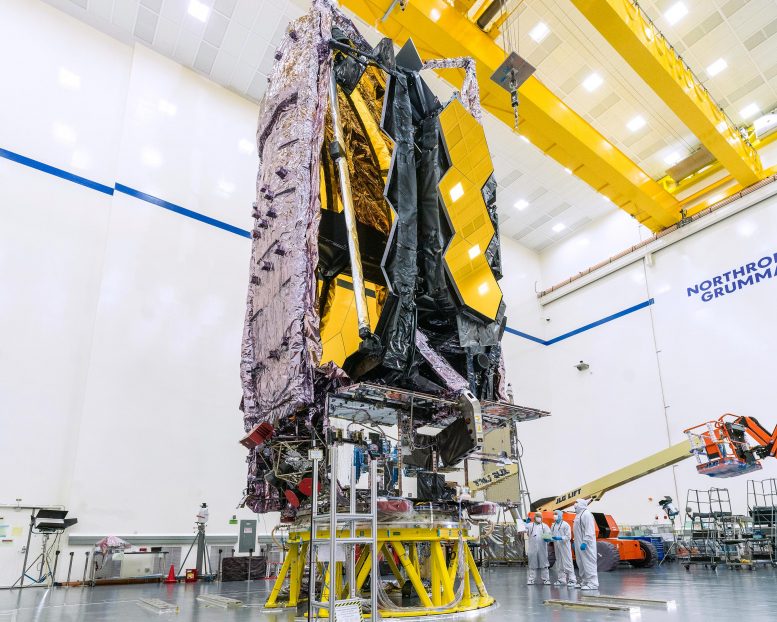
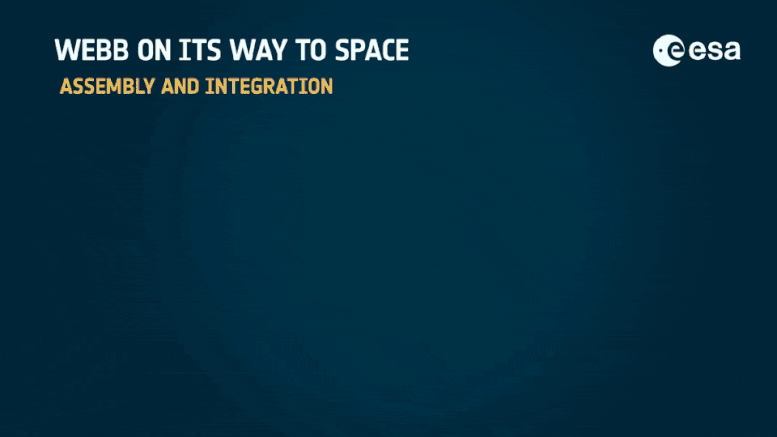
No comments:
Post a Comment